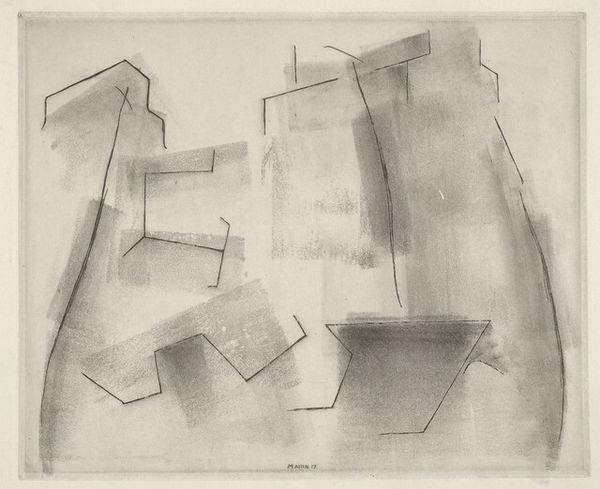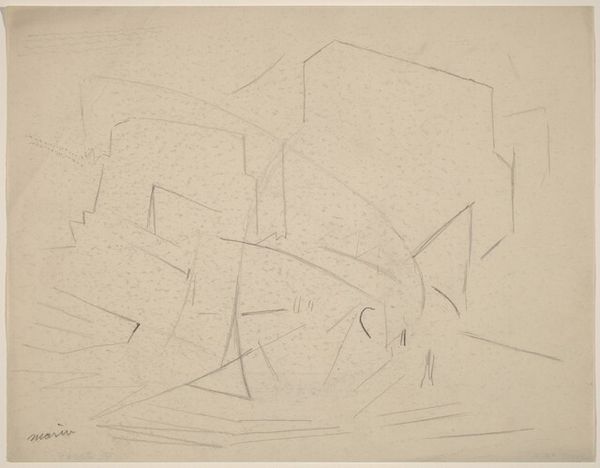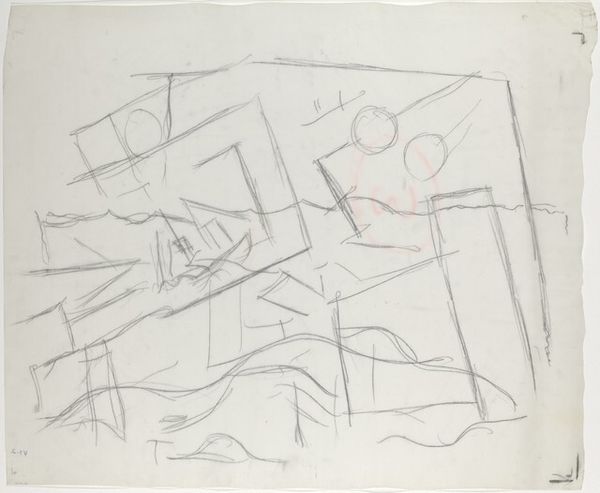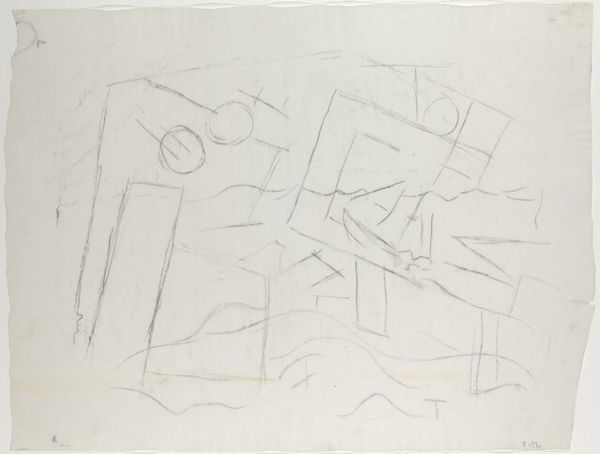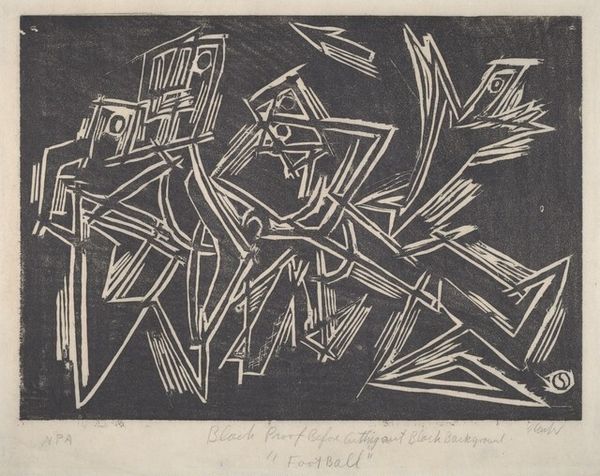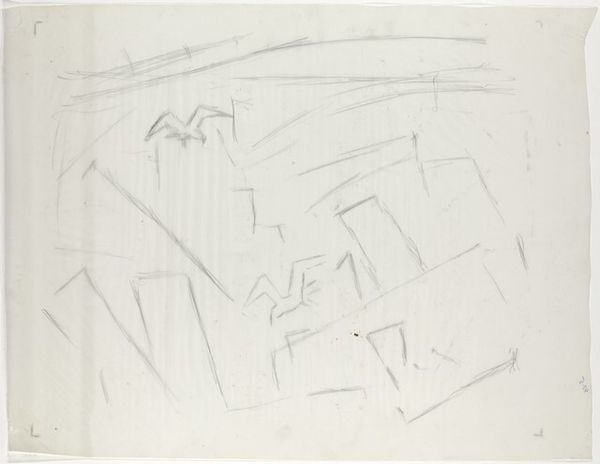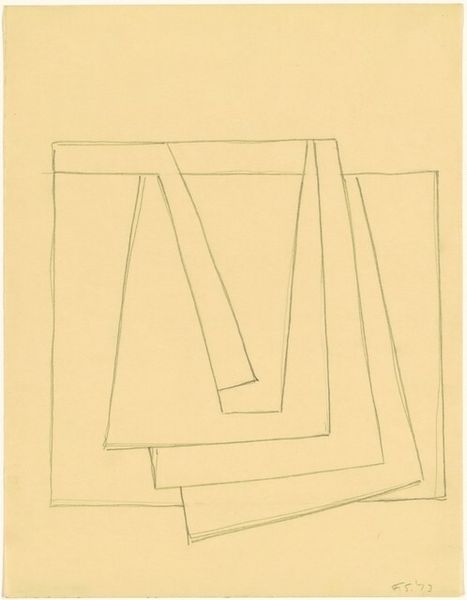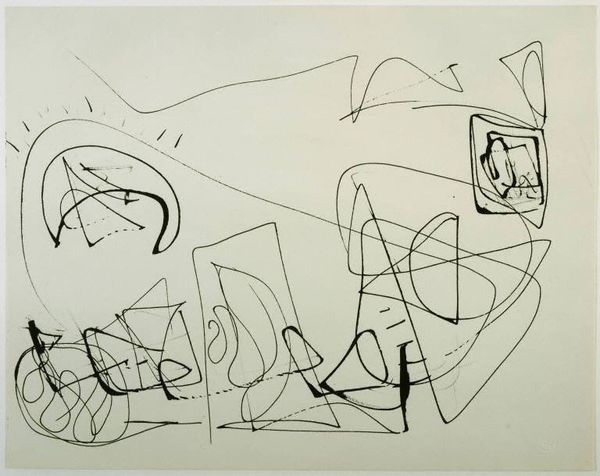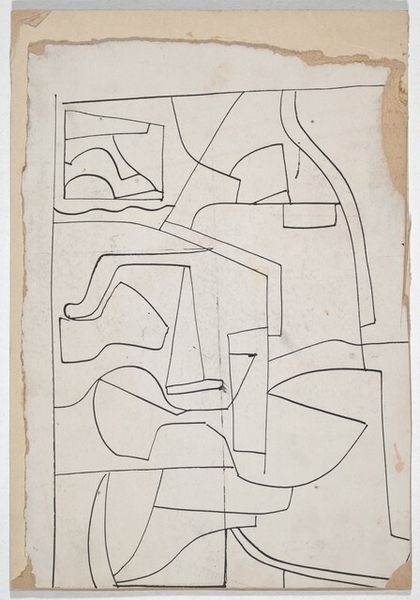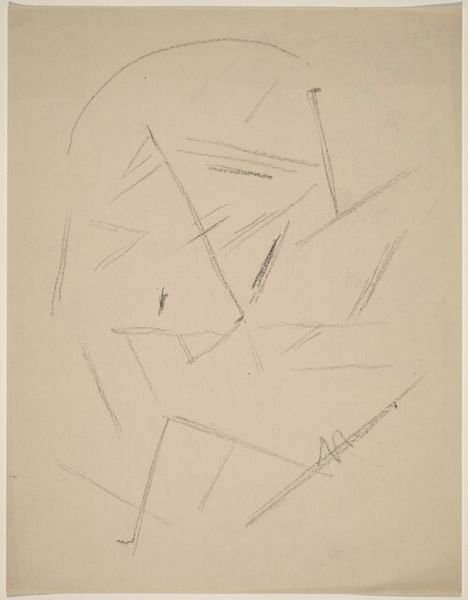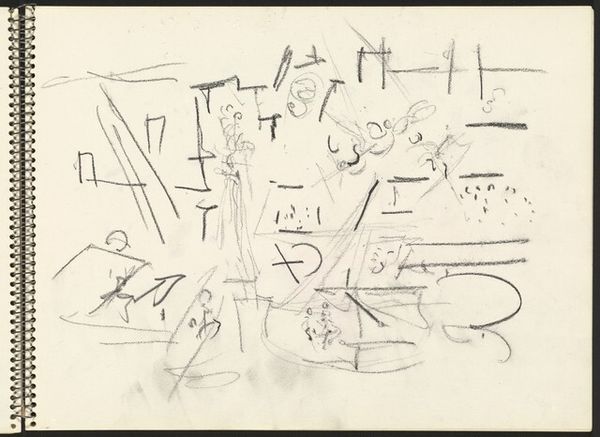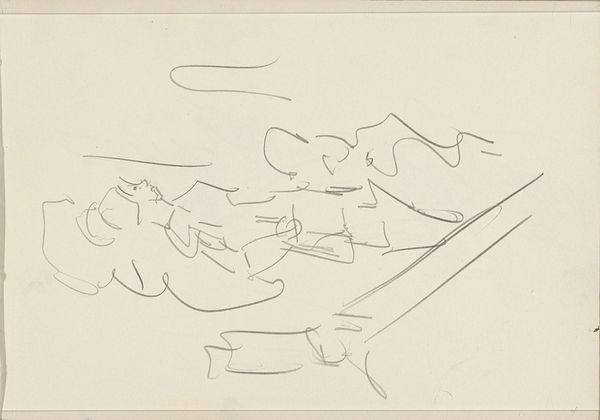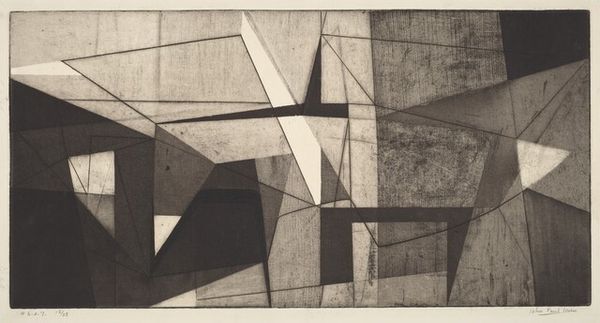
Dimensions: plate: 23 x 28.5 cm (9 1/16 x 11 1/4 in.) sheet: 35.5 x 41.6 cm (14 x 16 3/8 in.)
Copyright: National Gallery of Art: CC0 1.0
Editor: So, this is John Marin's "Movement—Grain Elevators, No. 2" from 1916. It’s a print made using pencil, and it almost looks like a sketch. The jumble of lines creates a really fragmented impression, chaotic even. What do you see in this piece? Curator: That chaos, as you call it, speaks volumes. Think of the grain elevator not just as architecture, but as a monument to progress, to industrial ambition. Marin isn't simply depicting these structures; he's conveying the energy, the dynamism inherent in them, through this near collapse of form. What does the fractured nature of the lines communicate to you, culturally? Editor: It makes me think of a city under construction, or even destruction. A sort of anxious energy? Curator: Precisely. There's a pre-war tension present. Consider the cultural memory embedded in industrialization at this time—the hope, but also the fear of displacement, the changing relationship between humans and machines. These aren't static objects. They symbolize the movement of goods, people, and, metaphorically, the very flow of capital and ideas that reshape society. Do you see how those jagged lines evoke power but also fragility? Editor: I do. The sharp angles give it that forceful feel, like things are being pushed and pulled. Curator: And what about the negative space? Does it give a feeling of the open sky, vastness of fields... a sort of emptiness too? Editor: Yes, the emptiness makes the geometry feel all the more stark. It's like progress and nature are fighting for space. Curator: Exactly! So, it is like Marin uses symbolism to portray a particular moment in history, making you feel the uncertainty about our future as he once must have felt. Editor: I’m now seeing those geometric shapes and frantic lines as a portrait of progress – and its discontents! Curator: It becomes a fascinating intersection of art, technology, and the human condition, wouldn't you say?
Comments
No comments
Be the first to comment and join the conversation on the ultimate creative platform.
